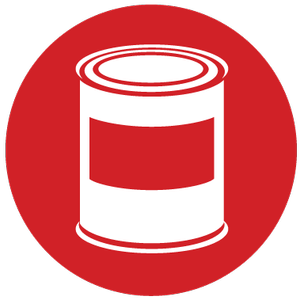Expand Your Knowledge
Food Planning
An Essential Element of Survival
The Nehalem Bay Region is a spectacularly beautiful place to live. However it also is susceptible to a variety of natural disasters some of which can temporarily cut off the supply of food for extended periods. In the aftermath of a major earthquake and tsunami, experts warn that this area may be isolated for up to 30 days. Stockpiling a sufficient food supply for you and your family, including pets, to last for a minimum of 30 days is a critical part of emergency preparedness here on the Oregon Coast.
What Types Of Food Should I Store?
Long lasting shelf stable food that doesn’t need to be cooked is an ideal choice (such as canned soup, beans, tuna or chicken). The aftermath of a disaster will be challenging enough, so simple ready to eat food choices are recommended. Other options to consider are dried foods (such as beans, rice and pasta) and freeze dried foods – remember these require cooking. Consider each family members’ dietary needs and what types of food they enjoy eating, and don’t forget to include food for your family’s pets. Remember to include some dried herbs and spices, salt, pepper and sugar.
How Much Food Do I Store?
Each family member, including each pet, needs a food supply sufficient to provide basic nutrition for a minimum of 30 days. This may seem overwhelming and too costly, but remember you don’t have to do it all at once. Purchase a little extra food each week to set aside for your emergency supply. Before you know it you’ll be well on your way to building up your family’s 30 day emergency food supply.
What’s The Best Way To Store Food?
Your emergency food supply should be stored in a cool, dry place (preferably between 45 and 75 degrees) which is safe from rodents and other wildlife.
What Food Is Safe After A Disaster?
Food in an unopened refrigerator will be safe to eat for about four hours following a power outage. Food in a closed freezer will be safe for about 24 hours without power. Most shelf stable food will be safe indefinitely as long as cans or packages are not damaged.
How Do I Cook Without Power?
You’ll need a heat source, fuel and some cooking gear (such as a pot and utensils for cooking and eating). You might consider using an outdoor gas or charcoal grill, a small camp stove or campfire. You also will need a supply of safe water for cooking and clean-up.
We welcome any volunteer who would like to help with putting on a class, doing research, coordinating with community organizations, or has an idea to expand our curriculum. Join us!


